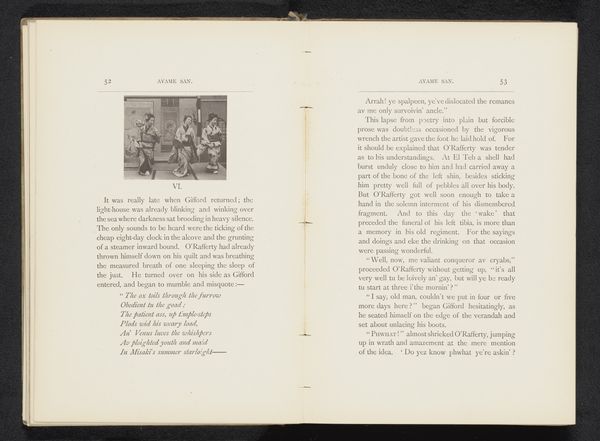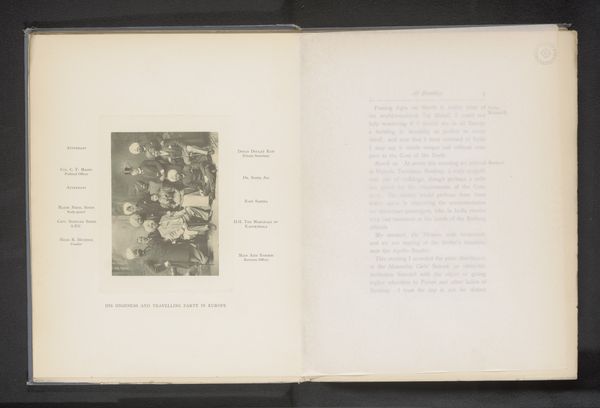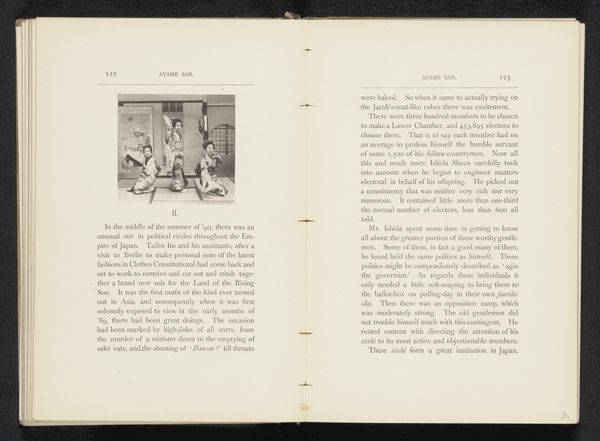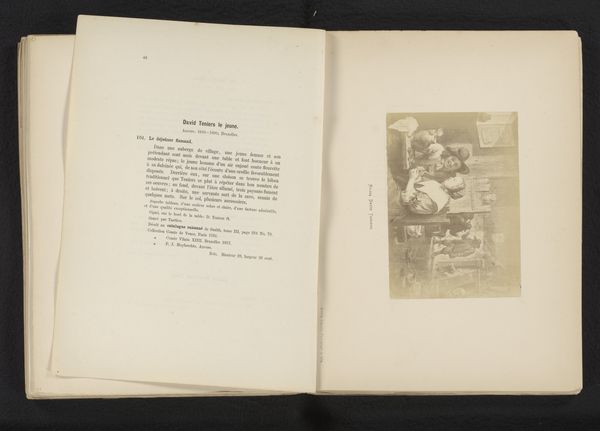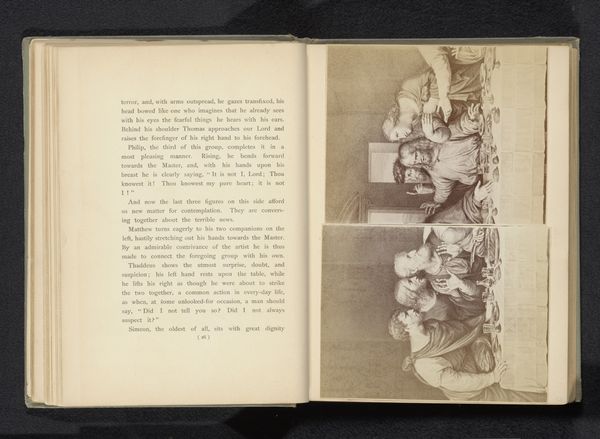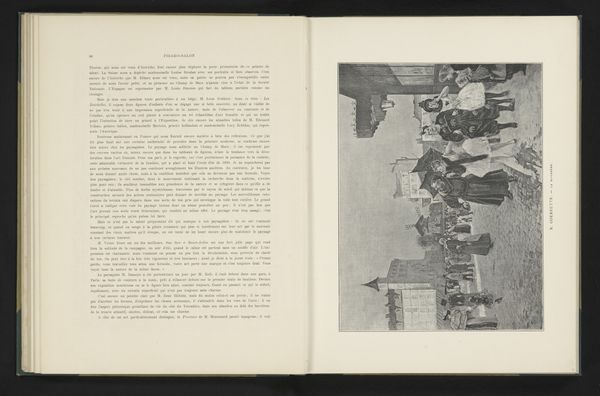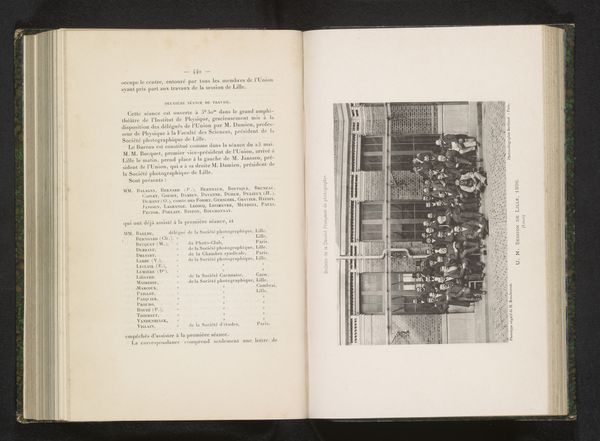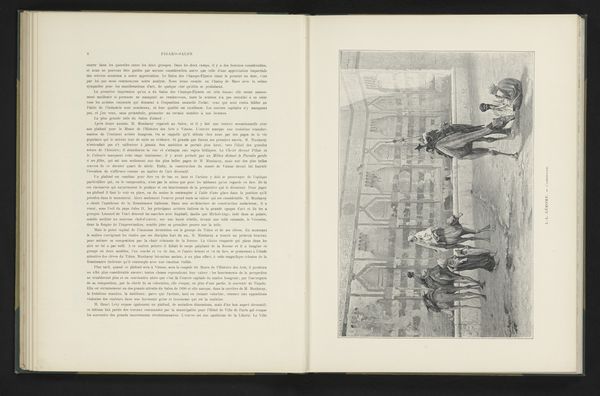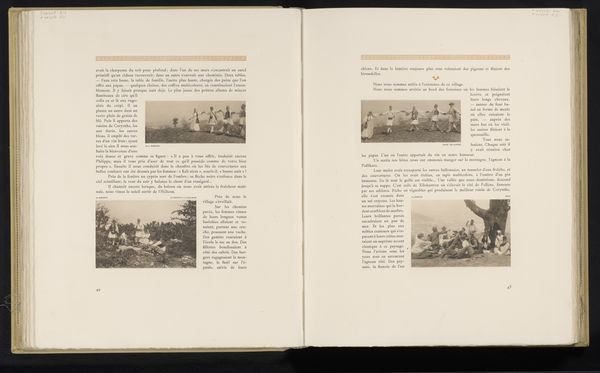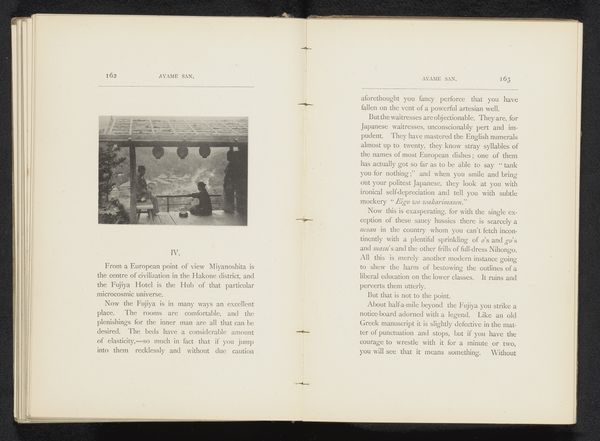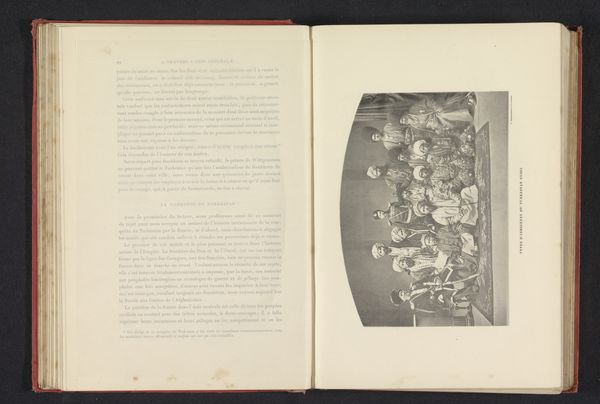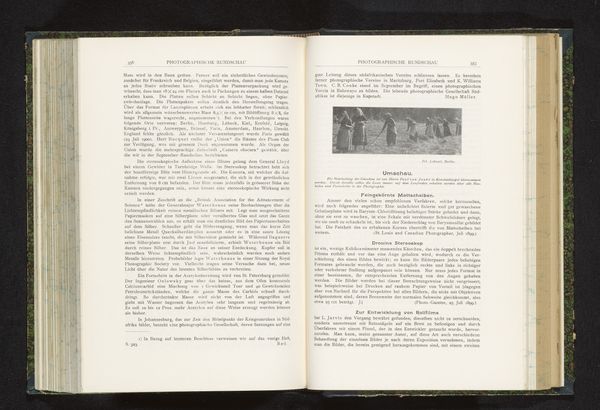
Dimensions: height 63 mm, width 81 mm
Copyright: Rijks Museum: Open Domain
Curator: This print, believed to be made before 1892, comes to us from Kazumasa Ogawa. It appears to be an image from a book featuring the scene "Drie dansende vrouwen in een interieur", which translates to "Three Dancing Women in an Interior." What's your first take? Editor: I immediately notice the stark contrast of the monochromatic photograph against the aged, off-white paper of the book. The intimacy is striking, capturing movement almost like a snapshot in time from another era. Curator: Indeed. Ogawa was instrumental in advancing photography as an art form in Japan, particularly through his use of collotype printing, a process which lends itself to a remarkable tonal range, as we see here. His work provides a valuable insight into the Meiji era and its fascination with depicting contemporary life through traditional artistic forms. Editor: Knowing it’s set during the Meiji era reframes my understanding. These aren’t just "dancing women"; they're likely engaging with a performance art form within specific social conventions, where art, performance, and identity are all tightly interwoven, I think it offers some insight to the complexities and potential cultural appropriations. Curator: Precisely. Also notice the hand-drawn or handwritten font, that seems intentionally chosen, juxtaposing the modern medium of photography with a handcrafted aesthetic, grounding the photograph with traditional art conventions. This juxtaposition was strategic in legitimizing photography's artistic merit at the time. Editor: I wonder about the women themselves. How much agency did they have in these representations? What narratives were being imposed onto their image? I notice the facing page has accompanying text about the women. Were they performers or part of a larger narrative being constructed and sold as commodity for viewers, both local and foreign? Curator: Those questions are vital to unpack. The print provides glimpses of not only their performative roles but also perhaps, the broader role that the female identity plays on social levels and cultural exchanges within the time. This reminds us of art's ability to document historical practices that must constantly remain under interrogation. Editor: Agreed. It is always essential to analyze historical works such as this one critically, mindful of the power dynamics that may have influenced it, making their realities visible even as the layers of context may not be easy to read from just looking at their visual image. Curator: Looking back at the image after our discussion, I now view this print as less of a depiction and more of a multi-layered representation laden with context that informs our current perspective, which opens up some fresh narratives. Editor: For me, I realize it’s essential to question and to engage with art critically, but remain reflexive to cultural interpretations that influence our readings today.
Comments
No comments
Be the first to comment and join the conversation on the ultimate creative platform.

